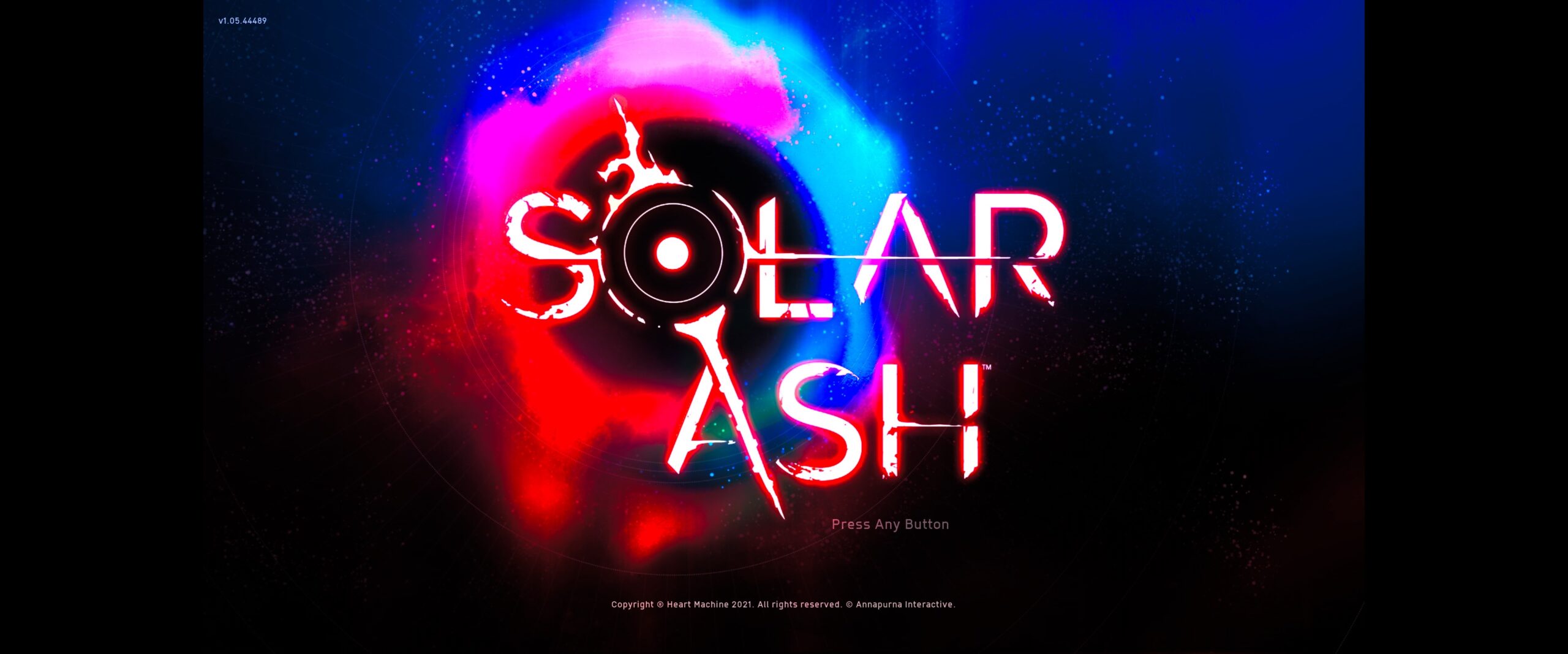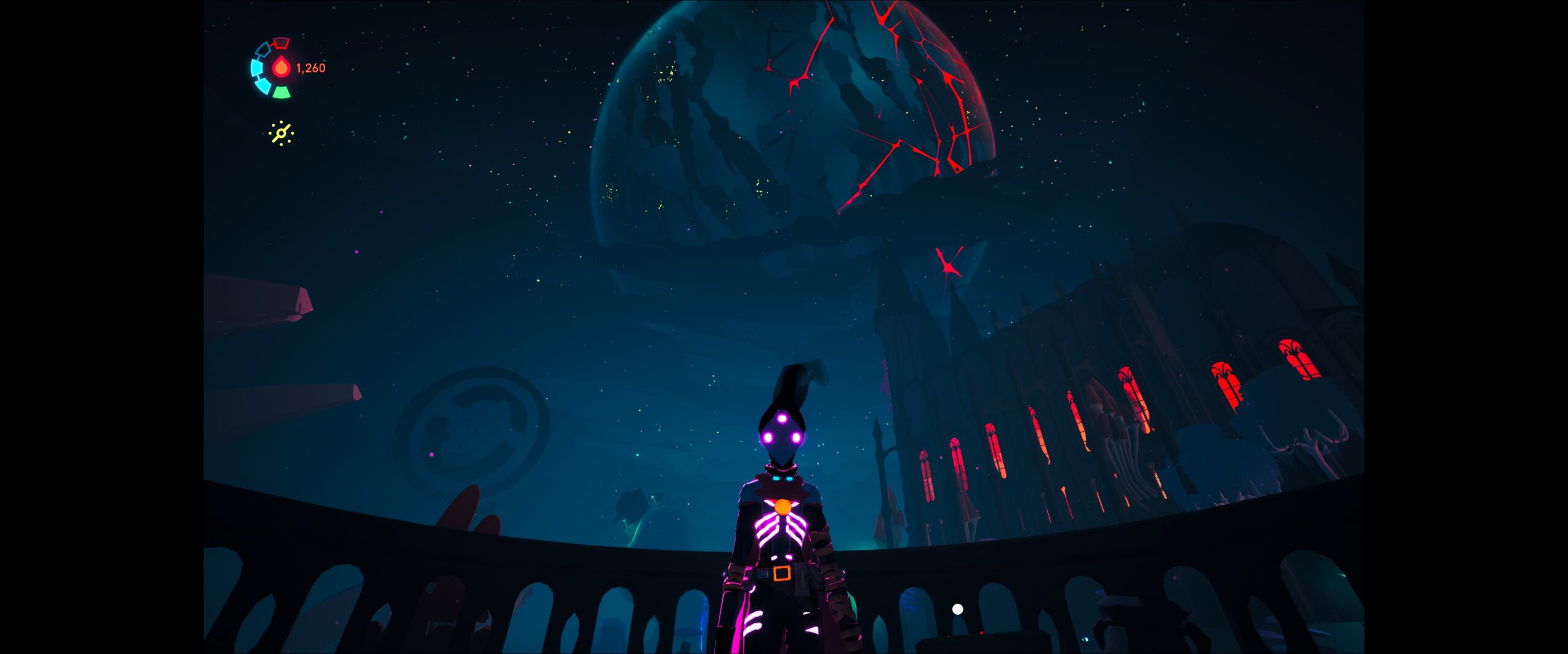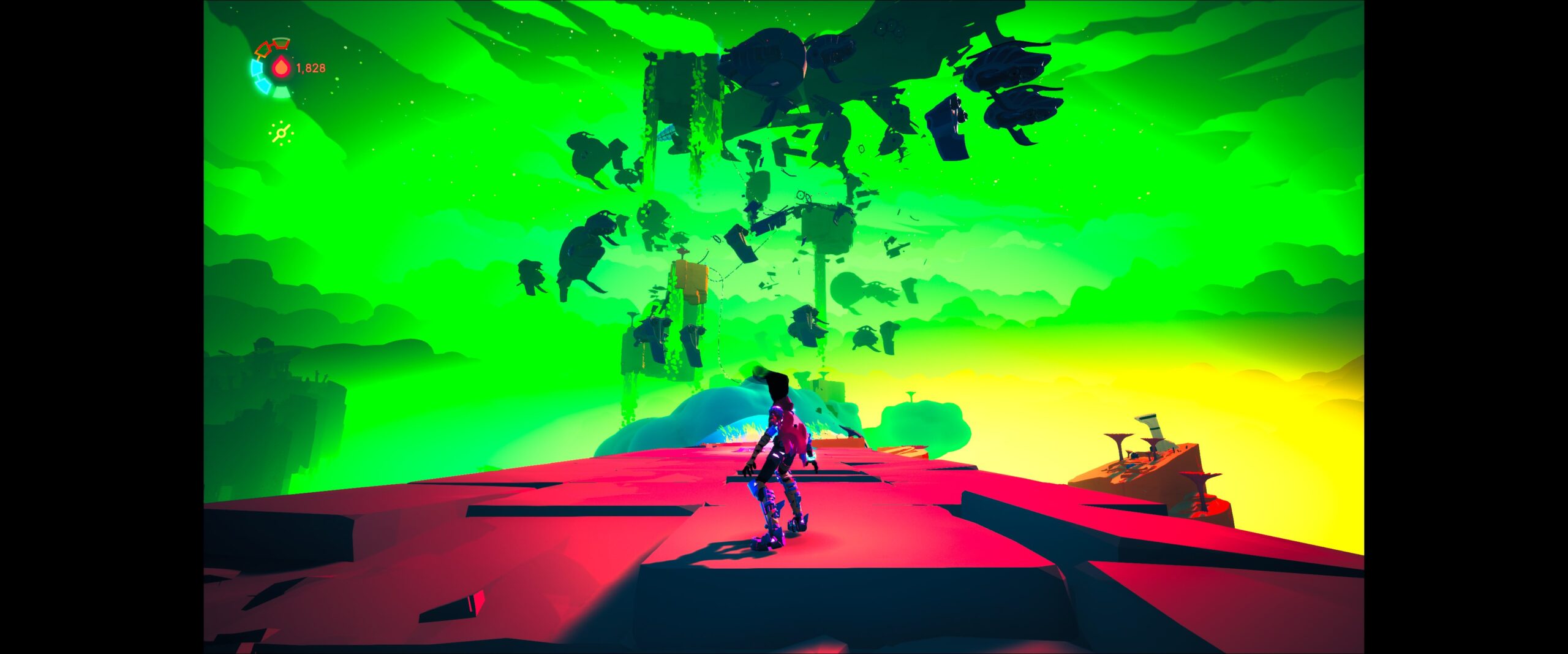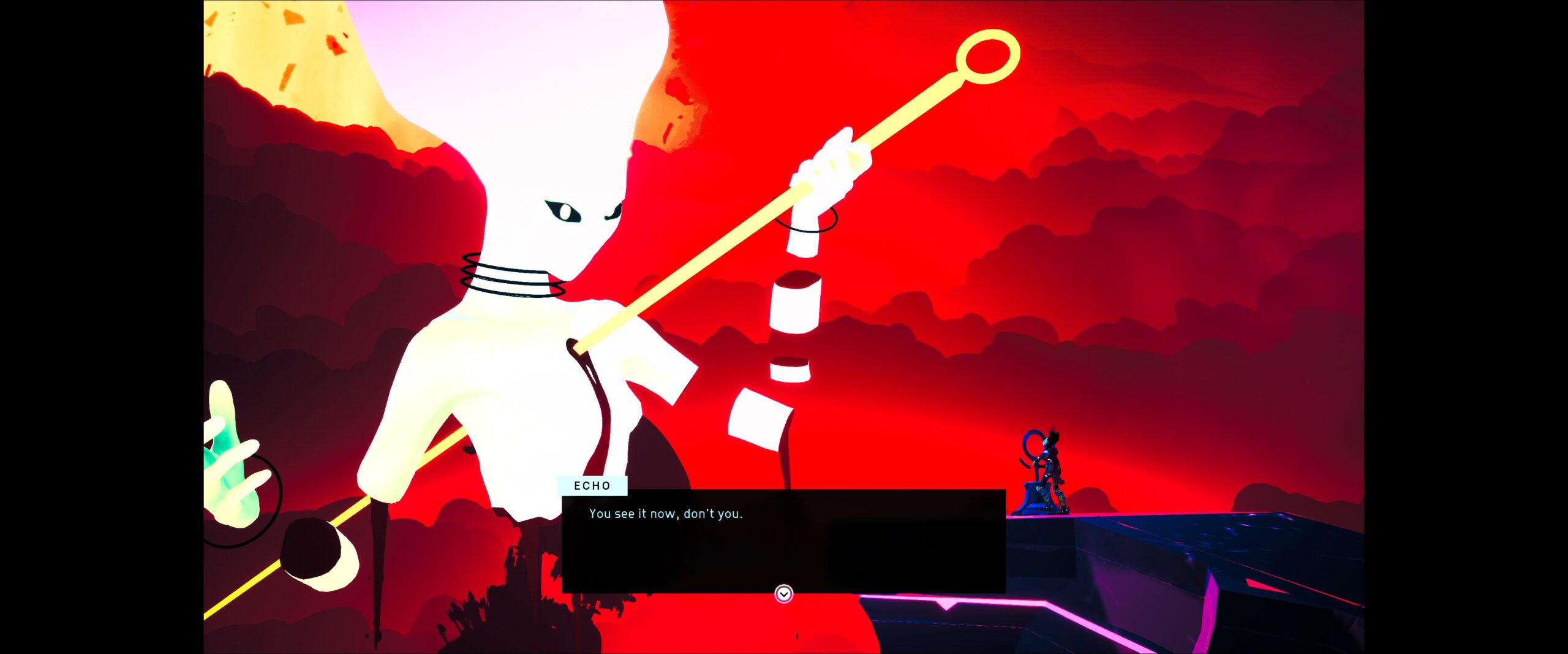Ah yes, this time of year. The one where I get to throw away some of my usual rules on what games I can review and can look more broadly for something interesting to play. I had had Solar Ash on my list for a while, forgetting that the reason why I had it there and leaving it by the wayside. Well the reason was that it comes to us from Heart Machine, the developers of Hyper Light Drifter. In retrospect I’m actually glad I forgot as it meant I treated the game as it was, not seeking to compare it to its heritage. Even with that advantage though Solar Ash, whilst a competent platformer with a detailed world to explore, is a somewhat repetitive game, its core mechanic being a one trick pony that doesn’t mature as the game progresses.

Your planet is doomed, pulled into the gravitational well of a massive black hole known as the Ultravoid. No one could agree on a plan, so it was you and your fellow voidrunners who decided to take matters into your own hands. Using the ancient alien technology that powers your voidrunning capabilities the Starseed was built, a massive construction capable of stabilizing and eliminating the Ultravoid, saving your planet in the process. You land next to the Starseed in the Ultravoid to find it non-functional, your AI companion Cyd telling you that interferences from nearby remnants are preventing it from activating. So it’s up to you Rei, to eliminate those remnants so you can save your world.
Solar Ash visuals are an unrelenting assault of bright neon colours, with each of the areas having its own distinctive style that’s reflective of its biome type. Indeed the colours are so distinct that I didn’t notice in my playthrough that this is your typical low poly/low texture art style that’s become the default for all indie titles these days. These bright colours help address one of my concerns I had with their previous title in Hyper Light Drifter, namely the visual confusion that came from having so much on screen. There’s no such problem here as everything is done in such oversaturated colours that contrasts are easy to pick out. Performance is good too with all areas appearing to be well optimised without any stuttering or slow down.

At its heart Solar Ash is a platformer, focusing mostly on movement and traversal across its large and open environments more than it does on anything else. So for the most part you’ll be running around the current level, looking for collectibles and trying to find a route to the area’s puzzles to unlock the final boss fight. There’s 2 progression systems: one that’s driven by “plasma” allowing you to unlock additional shield cells and the voidrunner caches which, when you collect a full set of them from one area, unlocks a new suit that also comes with an additional benefit. Overall it’s a pretty simple and straightforward game, something which unfortunately counts against it (especially when compared to its predecessors).
The platforming and level traversal is done well for the most part, giving you a lot of freedom in exploring the relatively large (but sparse) environments. You’re thankfully never too far from any one particular part of the level you’re in and you’ll often be unlocking shortcuts along the way which makes coming back to the same place a relatively easy affair if you miss something or what to explore for collectibles. Like all 3D platformers though precision is a hit and miss affair and you’ll often find yourself heading back down to ground because you were off by a few pixels. It’s not a massive issue, but it certainly made a few puzzles a lot harder than they should have otherwise been.

Where the game starts to fall down is in the repetitive nature of the core platforming, including the bosses of each level. Whilst the environments are quite diverse both in their construction and visuals you will basically be doing the same thing every time: platforming your way through various challenges until you reach the end. There’s also no real progression in the platforming itself either, the additional challenges that are added usually only done for that particular level and never used to build on one another. Whilst I understand that this is a design choice from the developers it does make the core game loop quite repetitive, to the point that I’d usually only play for an hour or so before wanting to take a break from it.
The narrative is above par however, even though I don’t think I really gave it the attention it deserved. The reason for this is its two tier construction: there’s the main narrative, which is bolstered and expanded significantly through finding voidrunner caches, and the peripheral narratives of all the other races who’s planets have been consumed by the ultravoid. The main narrative plods along well enough on its own but if you really want the full experience it’s kind of a requirement to ferret out all those caches (which aren’t too hard to find, thankfully). The secondary narratives though require quite a bit more work to unlock everything and, honestly, I couldn’t be bothered due to the aforementioned repetitive game play. So for those a little more dedicated than I there’s probably a good chunk of story there that’s worth uncovering.

Solar Ash then sits in a strange middle ground; it has a solid foundation in its mechanics, visuals and above par narrative but is let down by its repetitive nature. I never felt the need to put the game down for good before I’d finished it, but then again I’m not sure if there was more appealing games on offer that I ever would’ve given it the amount of time I did. All that being said though I’m not sure I could give honest feedback on what could be done to improve it. Perhaps this game is where it needs to be: a semi-niche title that achieves what it set out to do and nothing more.
Rating: 7.5/10
Solar Ash is available on PC, PlayStation 4 and PlayStation 5 right now for $57.99. Game was played on the PC with 6.5 hours of total playtime.




Its also on Xbox Gamepass
Good point! I’ll have to remember to include that in future reviews.